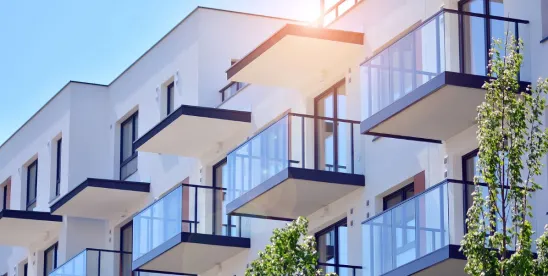As has been widely reported, Governor Maura Healey on Tuesday signed into law the Affordable Homes Act (AHA), also known as the Housing Bond Bill (H.4977), which the Legislature passed in the wee hours of August 1, 2024. Among other important provisions, the AHA makes accessory dwelling units (ADUs) a by-right use in single-family zoning districts across the Commonwealth by adding ADUs to the list of specially protected uses in M.G.L. c. 40A, § 3. The ADU provisions appear in Sections 7 and 8 of the bill.
Under the new law cities and towns are not allowed to regulate ADUs by:
- imposing special permit requirements for the first ADU on a property
- requiring any discretionary zoning approval for an ADU
- requiring more than one additional parking space
- requiring any additional parking spaces if the lot is within ½ mile of a commuter rail station, subway station, ferry terminal, or bus station
- prohibiting rentals of ADUs (except for short-term rentals)
- imposing owner-occupancy requirements
- prohibiting or unreasonably restricting ADUs
Cities and towns are allowed to impose regulations such as:
- size restrictions
- short-term rental restrictions
- site plan review
- dimensional setbacks
- bulk and height regulations
- may require one additional parking space, but no more, where the property is more than ½ mile from a commuter rail station, subway station, ferry terminal, or bus station
- special permits for more than one ADU on a lot*
- other “reasonable restrictions”
*The law actually requires municipalities to impose a special permit requirement for a second ADU on a lot in a single-family district.
When does it go into effect?
The new definition of ADUs, which prohibits owner-occupancy requirements and “unreasonable restrictions,” but permits size restrictions and short-term rental restrictions, goes into effect immediately.
On February 2, 2025, 180 days after the date the law was enacted, the remainder of the ADU provisions go into effect (such as the requirement for special permits for secondary ADUs, and the parking provisions). However, given that the immediate effect of the law is to prohibit municipalities from “unreasonably restricting” the creation or rental of ADUs, municipalities and homeowners should understand the law to immediately permit ADUs in single-family residential districts by right.
What does “by right” mean?
By right means that no town or municipality may deny a homeowner from constructing an ADU on a single-family zoned lot if they meet all reasonable dimensional requirements. Special permits are, by definition, discretionary: even if an applicant meets all of the requirements to obtain a special permit, a town board is allowed to deny the application. Going forward, ADUs may not be subject to special permits or other such “discretionary” permits.
What’s the size limit?
The new law does not change the size limit for ADUs, which is “not larger in gross floor area than ½ the gross floor area of the principal dwelling or 900 square feet, whichever is smaller.”
Are there forthcoming regulations?
The AHA provides that the Executive Office of Housing and Livable Communities (EOHLC), may promulgate regulations to administer the amendments to M.G.L. c. 40A, § 3. While no regulations have yet been proposed, we will be keeping an eye out for any implementing regulations from EOHLC.
What are “reasonable regulations”?
Good question. Under M.G.L. c. 40A, § 3, there are a number of uses that municipalities may not “unreasonably regulate,” such as educational and religious uses. Over the years, a large body of case law has developed concerning what “reasonable regulations” may be imposed on uses protected by the statute. Generally, regulations that either effectively prohibit a protected use (such as a draconian setback requirement) or regulations that have no basis in public safety and welfare (say, a requirement that all ADUs be painted a certain shade of blue) are considered unreasonable regulations. One particularly interesting issue is whether a “lot coverage cap” that prohibits structures from covering more than, say, 3% of the total square footage of a lot, is reasonable. These and other important issues are sure to be litigated in the coming months and years.



 />i
/>i
